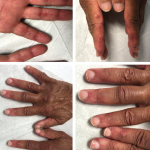SNOWMASS VILLAGE, COLO.—Choosing the right treatment at the right time is the brass ring all rheumatologists hope for. Precision medicine provides the ability to leverage clinical, biomarker and omics data to predict and personalize future treatment for rheumatoid arthritis (RA). “New data and new methods to analyze the data are helping us better predict patterns…






